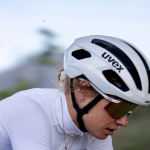The Forzani Group Ltd. announced today that it has established long term growth objectives for the next four to five years. FGL's senior management team will discuss the Company's strategic plan and growth objectives at an Investor Day presentation today in Toronto. The presentation will also be available simultaneously via webcast.
The objectives for average annual increases in key metrics include 10% in sales; 15% in earnings before interest, taxes and amortization (EBITA); 20% in earnings per share and dividends; and 100 basis points in return on equity (ROE).
“We are advancing with an array of initiatives that we have been testing for more than a year,” said Bob Sartor, FGL's Chief Executive Officer. “We're encouraged by the early results, which met or surpassed our expectations despite the challenges of a weakening Canadian economy.”
The major initiatives underway at FGL include increasing the average size of its Sport Chek outlets by 5,000 square feet, the largest FGL banner with 128 stores, because bigger stores deliver a better return on investment; Adding concept shops within many of the Sport Chek outlets, including 21 Nevada Bob's Golf boutiques in the current fiscal year, following a successful test of six such boutiques last year. This strategy is capital efficient and less risky than adding free-standing Nevada Bob's stores; Focusing Sport Mart, with 82 stores, more sharply on opening price point customers to capture a much greater share of this $3.5 billion market; Adding vendor managed performance nutrition departments in Sport Chek and Fitness Source stores. The business has sound margins, faster inventory turns than sporting goods, and the potential to add to store visits as customers replenish supplies; Reducing our banner count to improve efficiency and reduce overlap and competition between our own outlets; and Striving for average franchise retail margins in our corporate stores, which would be a 150 basis point increase in corporate store margins.
“Our plan should see retail system sales increase to $2.6 billion by 2014 from $1.6 billion last year, before taking acquisitions into account,” said Mr. Sartor. “Our plan also allows us to gradually buy back shares and return capital to our shareholders through dividend growth. We have an experienced and performance-driven management team, and we are confident that they can implement the plan and achieve the objectives that we have established.”















